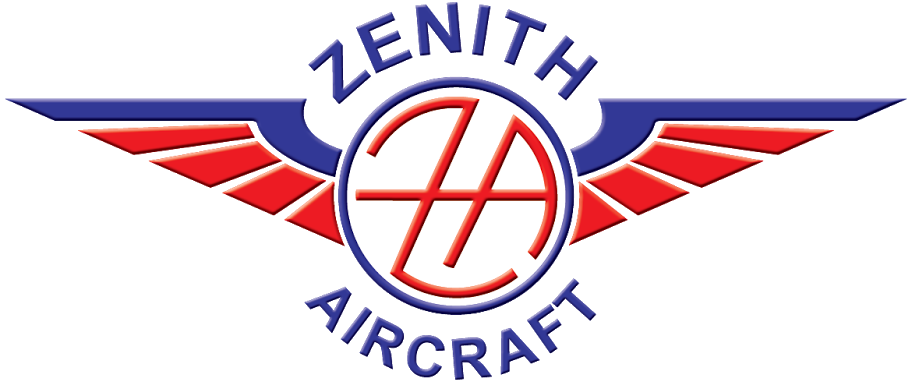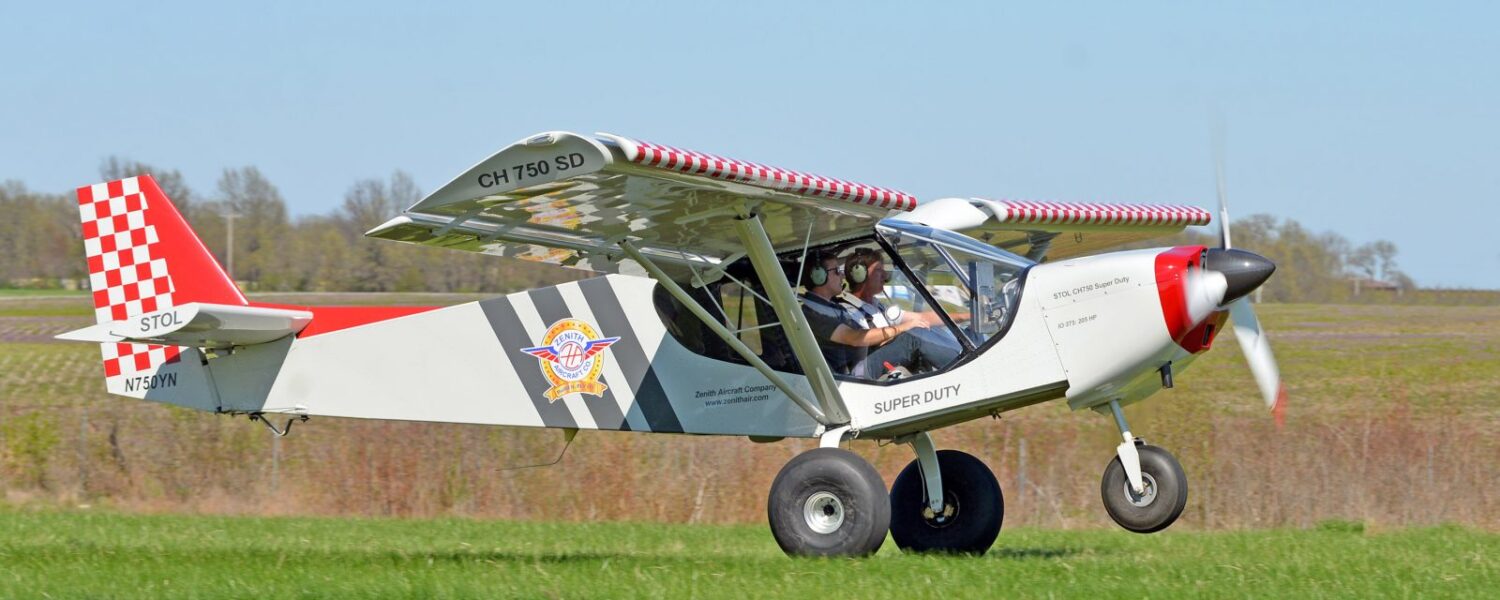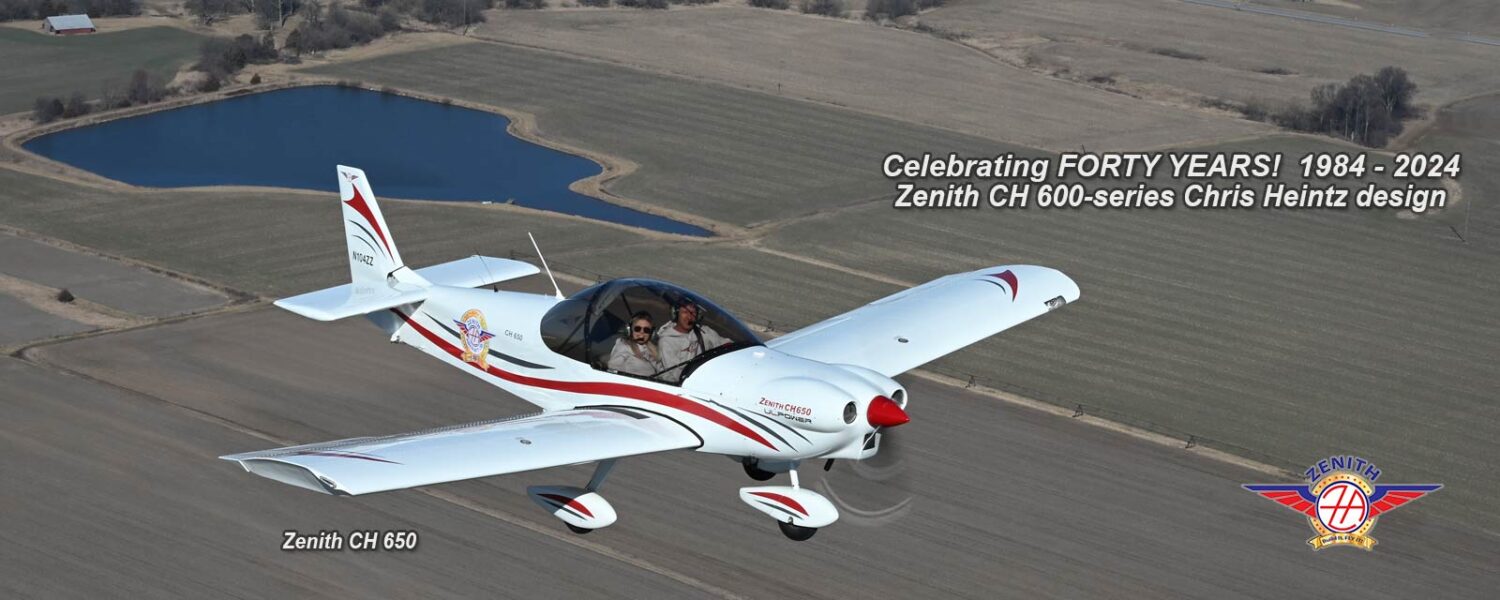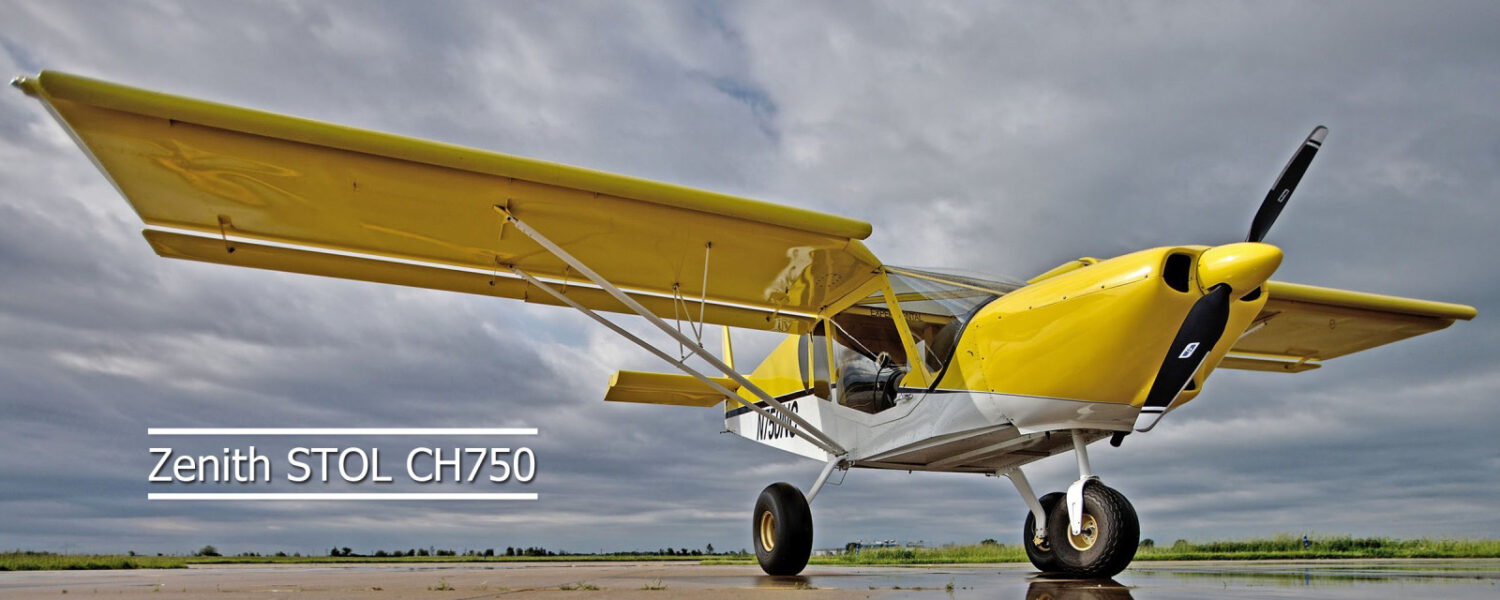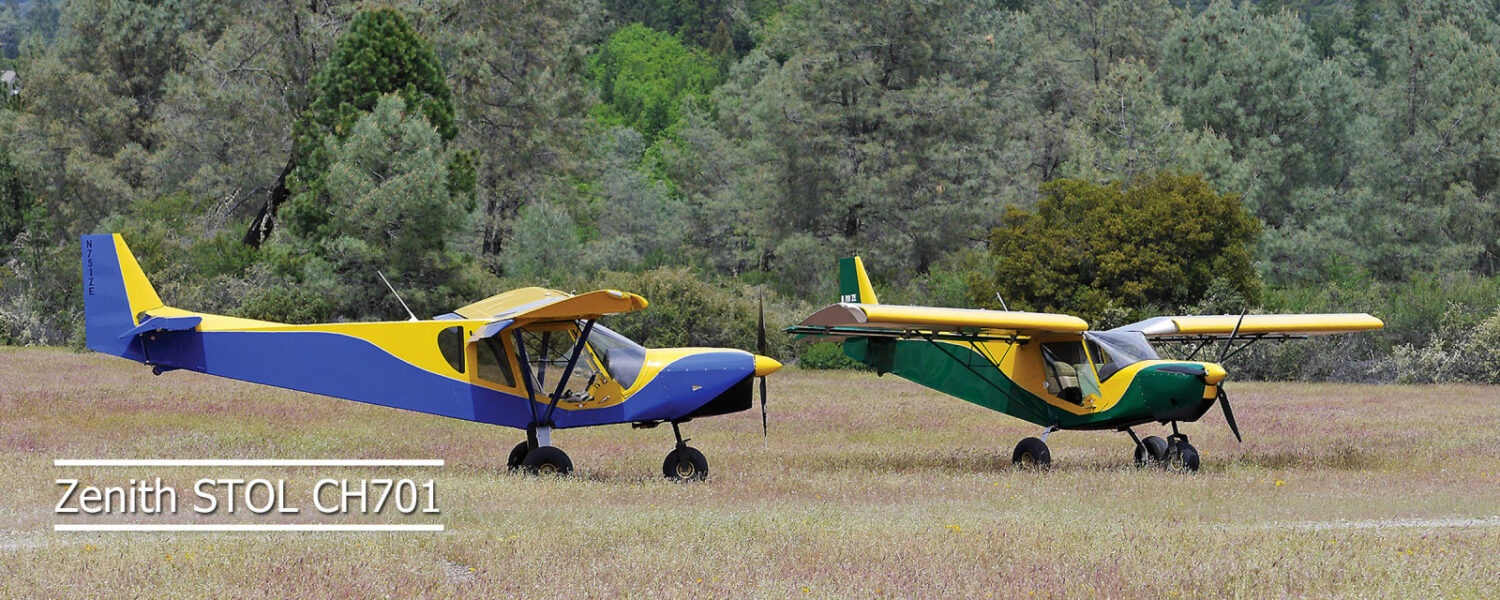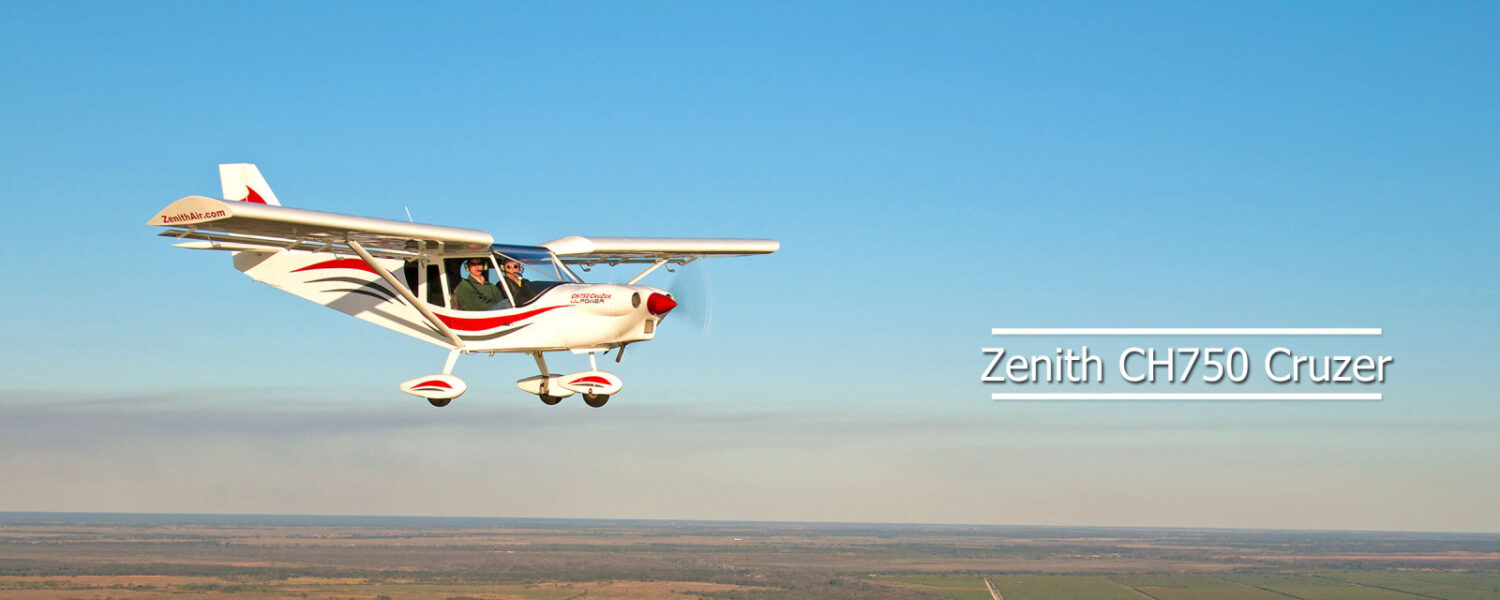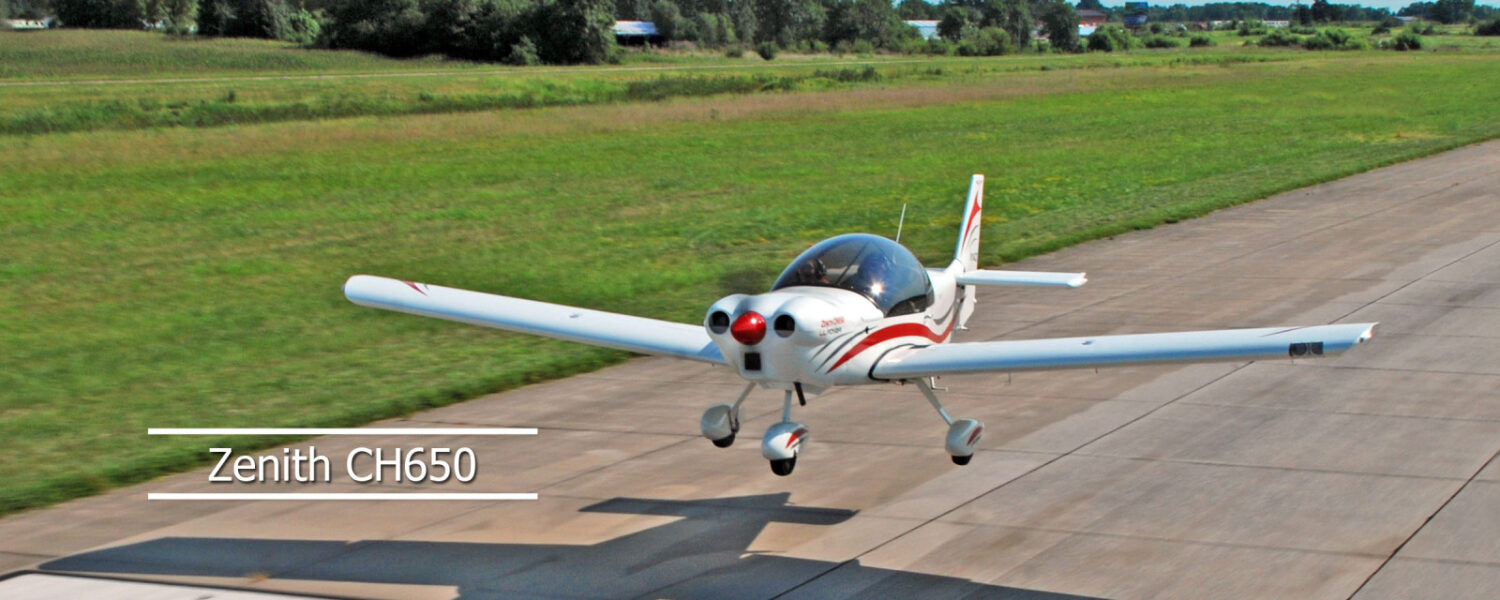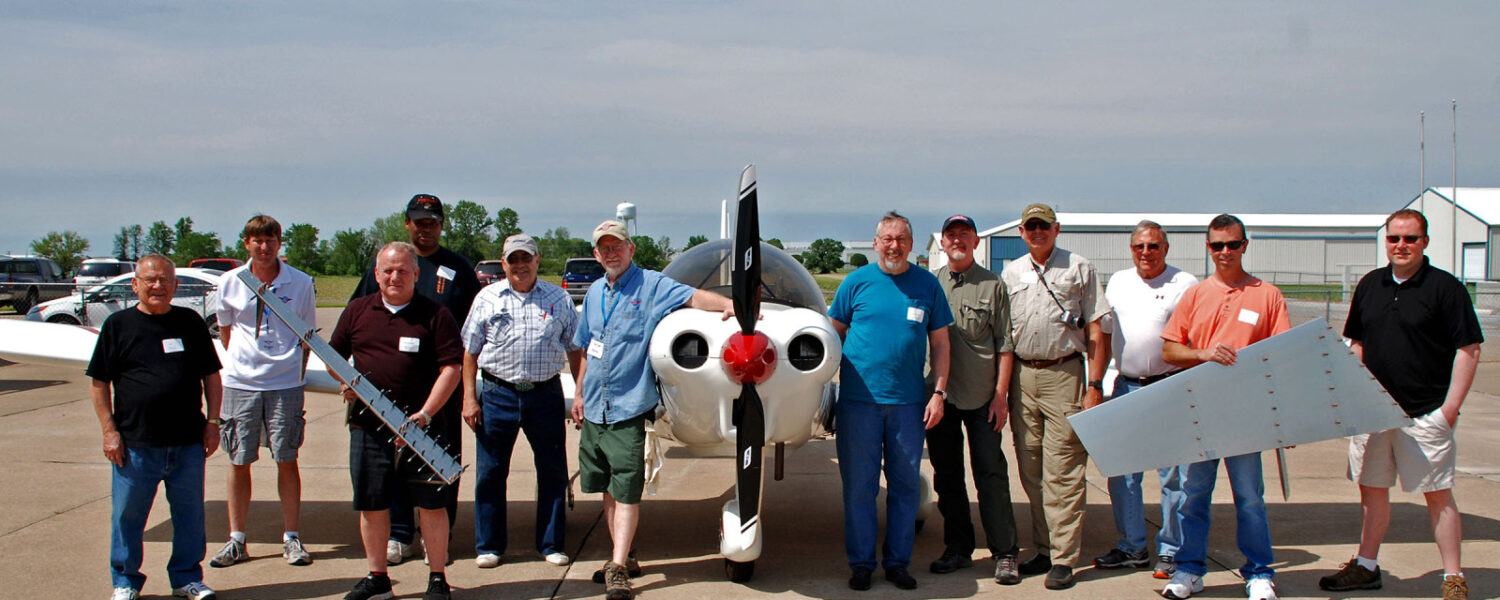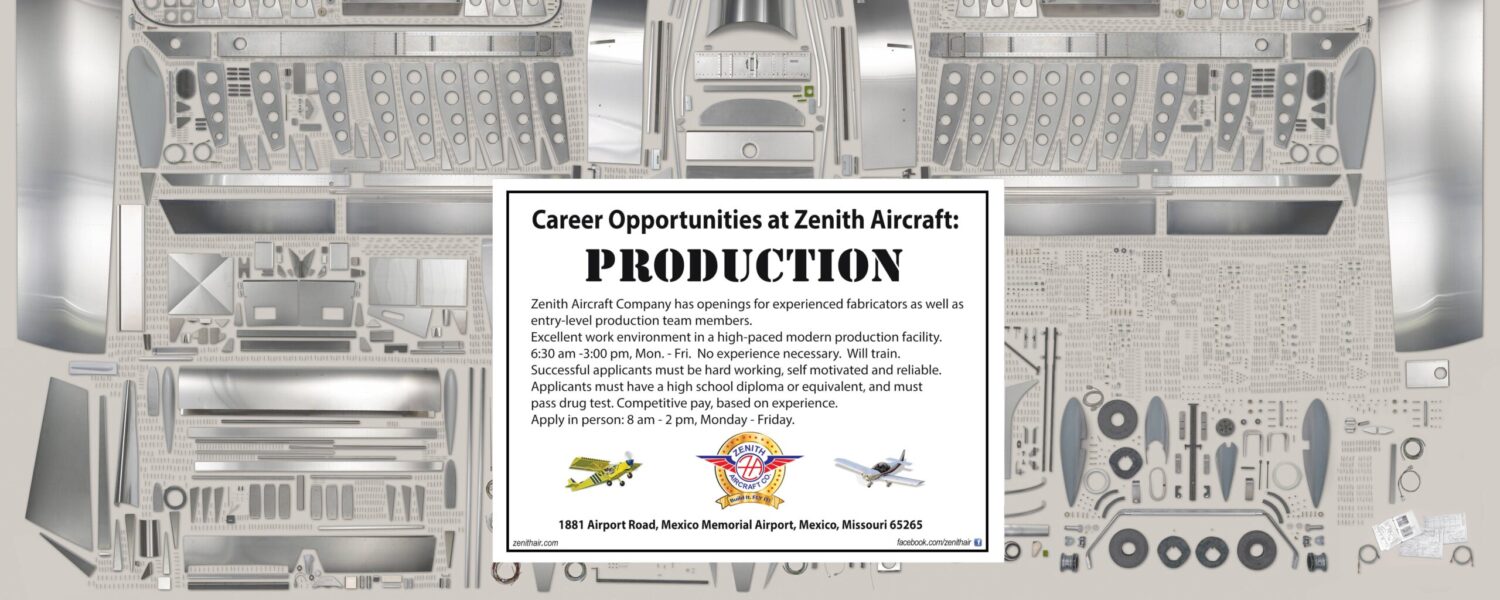By Ron Alexander
I have finally made the decision. I am going to build an airplane! Where do I begin? Do I have the skills necessary, the time, the money? Will my family support me? Can I do this? The answer is yes, I can do this successfully. Well, if so, where do I begin? The answer is found in preparation and planning. The beginning stage of building an airplane is crucial to assuring the final completion. You must be prepared for the undertaking and understand what lies ahead as much as possible. I firmly believe, based upon my experience, that the success rate (completion rate) of airplane builders can be much higher given proper preparation. Well, if all of this is true, how do I prepare myself for this major undertaking?
First of all I believe there are four major factors that influence the success or failure of constructing an airplane either from a set of plans or from a kit. Simple awareness of these problem areas will increase your probability for success. First of all, you must acquire the technical knowledge and develop the skills necessary to build an airplane. Failing to do so will result in a lack of confidence during the construction of the aircraft that often causes the project to be condemned to the basement or garage never to be completed. Secondly, family involvement is essential. You must involve your family with your project. A large number of airplane projects remain unfinished as a result of family misunderstandings. The third major factor is the amount of time required to build an aircraft. This time is often underestimated and the result can be frustration which often in turn leads to termination of the project. The last factor for successful completion involves money. The financial requirements are often miscalculated as to the total amount required and also when the money will be needed. These four areas of concern certainly are not all-inclusive. There are a number of other factors that contribute to the overall successful completion of an airplane. However, I am convinced that these four are critical.
Over the next few months, I will discuss with you how to properly prepare yourself for the experience of building an airplane. I will outline the different methods of airplane construction, the tools needed for each method, workshop requirements, time, how to involve the family, etc. All of the types of airplanes available to build, regardless of their method of construction, have certain things in common. One of these involves the requirements necessary to certify and operate an aircraft as an amateur-built. Last month, I discussed the Far of airplane building and how they apply to each phase of construction. In this article, I will discuss the initial preparation phase of building with emphasis on the specific requirements to license your airplane. Before you actually begin construction you should know what you are going to need to be prepared for the final inspection of your airplane by the FAA. I will develop a checklist to assist you with these items. What follows applies to both a plans and a kit built aircraft.
Once you have decided what type airplane you are going to build, you should contact your local FAA office. Each regional office should have available a packet of information that includes necessary forms, Advisory Circular 20-27D, a listing of eligible kits, and other information pertinent to amateur-built aircraft. Advisory Circular 20-27D is necessary. It contains most of the information you will need to properly prepare for the certification process of your aircraft. If you are purchasing a kit, you will want to ensure that it is listed on the FAA listing of Eligible Amateur Built Aircraft Kits. If it is not listed, you may have difficulty obtaining amateur-built certification.
Also provided with the information package is a listing of the names of Designated Airworthiness Representatives within your local area. A Designated Airworthiness Representative (DAR) has the authority under the Federal Aviation Regulations to act as an FAA representative to issue airworthiness certificates. These individuals are authorized to inspect an aircraft and issue the special airworthiness certificate under the experimental category. This certificate will usually be issued for the purpose of operating an amateur-built aircraft. Dar’s are not government employees, rather they usually have their own business. Therefore, they will charge for inspecting your aircraft and issuing the air-worthiness certificate. This charge is usually about $300-$400. FAA Inspectors do not directly charge for this service since they are government employees.
You should decide in the beginning whether to use a DAR or an FAA Inspector to inspect your airplane when it is completed. When you begin the project, contact the person you have chosen and advise them that you are building an airplane. Start a relationship with the individual so you can ask questions and seek advice throughout the building process. They will be very beneficial in ensuring you are properly prepared for the final inspection of your airplane. Prior to 1983, the builder of an airplane was required to have an FAA inspection at several stages during construction. These inspections were commonly known as precover inspections. In 1983, the FAA decided to only inspect the aircraft one time just prior to the initial flight test. At that time the airworthiness certificate may be issued.
Common sense tells us we will want to have precover or in-process inspections of our project accomplished. These inspections should be performed by a person with proper qualifications. Several choices are available. You should be involved with your local EAA Chapter and find out if an EAA Technical Counselor is available. A Technical Counselor is a designated individual with a proven broad background who has been selected by his EAA Chapter as an advisor. Most Chapters have Technical Counselors who have building experience. If possible, select a person who has experience in building your particular airplane or at least with the same type of construction. If a counselor is not available, find someone else who has built a similar type airplane who would be willing to look over your shoulder and help you look for problem areas. Finally, a licensed mechanic (A&P) can be valuable in performing inspections. Preferably, the mechanic should have experience with experimental airplanes.
Having established contact with a DAR or FAA Inspector and after finding someone to inspect your aircraft throughout the building stages, you will want to prepare yourself to begin work. The first step is to thoroughly review the plans or assembly manual provided by the designer or manufacturer. Reading the plans and/or manual will save you countless problems later. You also should purchase several reference manuals such as AC43-13, which will assist you in obtaining answers to questions that will certainly arise. Hands-on workshops are also available through the EAA/SportAir workshop program that teach the technical skills needed to build an aircraft. You should acquire a working knowledge of the area of construction involved such as composites, welding, sheet metal, fabric covering, etc. Gaining this knowledge will give you the confidence necessary to begin the project in addition to preparing you for problem areas that will arise.
Finally we are ready to begin construction. Tools needed, workshop space, etc. will vary with the type of project you have selected. We will discuss those specific needs in subsequent articles. This discussion will pertain only to general issues. From the very beginning you will need a builder’s log. This log will contain the history of your airplane during the construction phase. It will serve at least three purposes: (1) proof that you built at least 51% of the aircraft which will allow you to obtain amateur-built certification, (2) an account of the aircraft to establish a value for insurance purposes or for resale, (3) a personal journal to show other builders, etc.
There is no required format for a builder’s log. I would recommend a large 3-ring binder that will allow space for a number of pictures, receipts and documents. Document every phase of construction with pictures of completed parts, receipts for materials used, samples of welds, glue joints, dates you worked, etc. A very important part of the log is the documentation of inspections. At the completion of each major phase of construction have a Technical Counselor or someone else that we previously discussed inspect your. Document the date of inspection, who inspected, what was inspected and the results. I recommend doing this regularly. You cannot have another set of eyes overlook your work too often. We can work on a project for months and continue to overlook a problem that someone else will spot immediately. In summary, the builder’s log is very important. It is the history of the life of your airplane and the FAA inspector will review it thoroughly to be sure you have built the major portion of the aircraft, that the work was done properly, that the materials were adequate and that the aircraft is indeed safe for you to fly. You must be very diligent in keeping up with this log.
The next step in preparing for your certification is to obtain an N-number and to register your airplane with the FAA. You may make application for a specific number for your airplane. FAR 47.15 will give you the specifics. Basically, the number you request must not exceed five symbols following the letter N. These symbols may all be numbers or 1-4 numbers and one suffix letter or 1-3 numbers and two suffix letters. The letters “I” and “O” may not be used and any zero must be preceded by another number. To obtain a specific N-number, send to the FAA an Affidavit of Ownership for Amateur-Built Aircraft, Form 8050-88 along with the number you desire. If your aircraft is a kit, you must also send an Aircraft Bill of Sale, Form 8050-2 with the word “aircraft” crossed out and the word “kit” inserted in its place. After the FAA has received your request and if the number you requested is not in use on another aircraft, you will be sent a form letter giving the number assigned along with a blank Form 8050-1 which is an Aircraft Registration Application. You then fill out this form and return it (with your N-number) to the Aircraft Registry. The pink copy of this form will serve as your registration document until the permanent Form 8050-3 is received. You must have your air plane registered before the FAA inspector or DAR can issue your airworthiness certificate. I recommend that you allow at least 90 days for this entire process. Some builders register their airplane when they begin while others will wait until a few months prior to final inspection. Often local property taxes are imposed when the aircraft is registered.
Several other items need to be completed during the building stage to prepare for the inspection. Your instruments should be properly marked with required markings such as the airspeed indicator for never exceed speed, etc., engine instruments for maximum and minimum safe operation, and any other pertinent markings. Baggage compartments should be properly marked with maximum weights. You may want to put “no-step” markings in certain places along with other warnings. Keep in mind the necessary instrumentation if you want to certify the airplane for instrument flying (IFR). FAR 91.205 can be referred to for the specific requirements. All controls should be labeled with their function and method of operation. You may also need to install an emergency locator transmitter (ELT). The requirements for this are found in FAR 91.207.
Other items are easily overlooked which are needed for certification of an experimental aircraft operated as an amateur-built. One of these is the experimental placard required by FAR 45.23. The word “EXPERIMENTAL” must be affixed to your aircraft on the exterior near each entrance to the cockpit or cabin. The letters must be at least 2″ high (no larger than 6″ high) and they must be legible and of a contrasting color. If you only have one entrance to the cockpit (such as a flipper canopy) only one side need be placarded. Without these letters on your amateur-built aircraft you will not get the airworthiness certificate.
Another item is the passenger warning placard. The following placard must be displayed in the cockpit or cabin at a location in full view of all passengers: “PASSENGER WARNING – THIS AIRCRAFT IS AMATEUR-BUILT AND DOES NOT COMPLY WITH FEDERAL SAFETY REGULATIONS FOR STANDARD AIRCRAFT.” Of course, this always instills confidence in your passengers. And if that were not enough FAR 91.319 states that you must advise each person carried that your airplane is experimental. This must be done even though you have the passenger warning displayed.
An identification plate must also be placed on the exterior of your experimental airplane. FAR 45.11 and FAR 45.13 explain the details. This must be a fireproof plate which is secured to the aircraft fuselage exterior so that it is legible to a person on the ground. It must be either adjacent to and aft of the rear-most entrance or on the fuselage surface near the tail surfaces. The plate must contain the builder’s name (your personal name), the model designation, and the builder’s serial number. You choose the serial number. This is a major requirement for certification.
Weight and balance data will be reviewed by the inspector. You are also required to carry a copy of the weight and balance with you in the airplane when you fly. Specifically, what do we need for weight and balance? You need to weigh your airplane empty without fuel, passengers, etc. You can often rent a set of scales from a local maintenance shop or often three bathroom scales will be sufficient. You need to include in your weight and balance data the following items:
– Date calculated, name of plane, serial number and N-number
– Empty weight and center of gravity
– Maximum weight (obtained from manufacturer or designer)
– Datum reference
– Weight and balance arms
– Most forward and most aft CG calculations
– Center of gravity limits including most forward and most aft.
– These items will be reviewed in detail during the final inspection of your airplane.
You will also need to place your N-number on your airplane prior to inspection. FAR 45.23, FAR 45.25 and FAR 45.29 state the requirements for these markings. In short, you must permanently attach your number either on the vertical tail surfaces or on the fuselage between the trailing edge of the wing and the leading edge of the horizontal stabilizer. This must be done on both sides of the airplane. If you have a twin-tailed airplane, both outside surfaces must display the numbers. If your maximum cruise speed does not exceed 180 knots, you may use three inch high numbers and letters. If your maximum cruise speed exceeds 180 knots the height must be 12″. On certain older airplanes (30 years or more) two inch high markings are allowed. The details regarding this can be found in FAR 45.22.
A logbook will be required on the day of inspection. Ideally, three logbooks should be presented: (1) airframe, (2) engine, and (3) propeller. It is legal to have one logbook with an index for each of the above. I personally prefer to have the separate logbooks. The inspector will endorse the airframe logbook upon satisfactory completion of the inspection. You will want to record all of the significant details concerning inspections and maintenance. The logs must be maintained for the life of the aircraft. Brief entries of “in-process” inspections should be made in the logbook in addition to your builder’s log. Remember, these are two entirely separate logs.
Finally, we are ready to have our airplane inspected and certified. Usually a call to a DAR is sufficient and you will be sent the necessary forms. FAA inspectors prefer to have a written request for inspection. A sample letter to the FAA inspector or DAR is contained in AC20-27D. It provides a quick glance of needed documents and it includes a copy of the letter you need to send to the inspector detailing where your airplane is located and the area over which the airplane will be test flown. Remember, when you choose the airport from which to test fly your airplane, be sure the runways are log enough, it is not located within a densely populated area, and that it meets your requirements to safely test your airplane. The test area will usually be within 25-50 statute miles of the airport you choose. Your airplane will only be inspected when it is ready to test fly. This is the day you have worked toward for several years. The airplane should be opened completely and all paperwork present (a list follows). The inspector should not request extensive disassembly of the aircraft provided you have documented evidence of in-process inspections. The only time they are authorized to request extensive disassembly is if they have a question of safety that would endanger the general public. You will find the majority of inspectors to be very cooperative provided you are properly prepared and provided your airplane is airworthy.
EAA Volunteers to ‘Help You Begin’
EAA Technical Counselors and Flight Advisors are important resources for anyone considering building an aircraft. These are individuals who assist other EAA members in providing advice for the construction and preparation for initial flight testing. Your local EAA Chapter most likely has at least one Technical Counselor and a Flight Advisor. If not, contact EAA Headquarters (414-426-4821) to get the name and phone number of a counselor or advisor in your area.
Technical Counselors are experienced builders and/or mechanics who provide their expertise to others in overseeing a construction project and “coaching” an individual to prepare for the final inspection by the FAA inspector of DAR. A Flight Advisor is an experienced individual with flight test experience who can help you think through your decision on what aircraft to build … the one that meets your expectations and capabilities as a pilot. A Flight Advisor will also help you go through a self evaluation of your current flying skills and proficiency to ensure that you are prepared for the initial flights and coach you through establishing a specific flight test plan. Don’t overlook a chance to have your fellow Eaters be a resource in making the fulfillment of your dream a safe one.
After formally requesting an inspection as outlined above, you will need the following on the day of the inspection:
2. Eligibility Statement (Form 8130-12). Note: This must be notarized.
3. Registration certificate (Form 8050-3)
4. Photo or 3-view drawing of your airplane as required by FAR 21.193
5. Your builder’s log
6. Copy of the weight and balance data
7. Logbook for airframe, engine and propellers (or one indexed logbook)
Upon satisfactory completion of the inspection you will be issued three documents: (1) the airworthiness certificate, (2) Phase I operating limitations, and (3) Phase II operating limitations. The inspector is also authorized to issue further restrictions under FAR 91.319 (e) if necessary. An appropriate logbook entry will also be made in the airframe logbook. Occasionally, the inspector will issue only Phase I operating limitations. These limitations only apply to the test flying phase and they have a limited duration of one year. You may not fly your airplane under Phase I after you have completed the required flight test hours or after one year unless you have approval from the FAA. Another inspection is often necessary. Phase II operating limitations apply to the operation of the aircraft after the required test flying and exist for the life of the aircraft. Usually, the inspector will issue both Phase I and Phase II at the time of inspection. To legally fly your airplane under Phase II after it has been test flown, you must make the following entry in the aircraft logbook: “I certify that the prescribed flight test hours have been completed and this aircraft is controllable throughout its range of speeds and throughout all maneuvers to be executed, has no hazardous operating characteristics or design features, and is safe for operation.” The number of flight test hours is 25 when a type certificate (FAA approved) engine/propeller combination is installed or 40 hours when a non-certificate engine and/or propeller is installed. Gliders and ultralights built from kits listed on the FAA Listing of Eligible Kits require only 10 hours and a minimum of five takeoffs and landings.
After successful completion of the required flight testing hours (completion of Phase 1), you should make application to the FAA for your repairman’s certificate. Advisory Circular 65-23A outlines the procedure. This is done on a Form 8610-2. The repairman’s certificate will permit you to inspect your aircraft annually (condition inspection) and make the necessary logbook entry.
Now you are ready to enjoy your airplane, fly to airstrips, carry passengers, etc. All of your efforts have finally paid off. The sense of satisfaction in having successfully built your own airplane cannot be measured.
Initial Pre-Flight Checklist | ||
| 1 | FAA or DAR | Contacted |
| 2 | FAA information packet | Secured |
| 3 | Construction manual or plans | Reviewed |
| 4 | EAA Technical Counselor | Contacted |
| 5 | AC20-27D | Reviewed |
| 6 | AC43-13 and other references | Purchased |
Exterior/Interior Pre-Flight (Building Phase) | ||
| 1 | Builder’s log | Begun |
| 2 | Affidavit of Ownership | Completed |
| 3 | Bill of sale from kit manufacturer | Completed |
| 4 | Application for N-number | Mailed |
| 5 | N-number | Received |
| 6 | Application for registration (90 days prior to inspection) | Mailed |
| 7 | Certificate of Registration | Received |
| 8 | Instruments, controls, etc. | Marked and placarded |
| 9 | ELT | Installed |
| 10 | Passenger warning placard | Installed |
| 11 | Experimental lettering | Affixed |
| 12 | Identification plate | Attached |
| 13 | N-numbers | Affixed |
| 14 | Weight and balance | Complete |
| 15 | Logbook | Purchased |
| 16 | Letter requesting inspection | Mailed |
Before Starting Engine Checklist (Day of Inspection) | ||
| 1 | Airplane | Ready and opened up |
| 2 | FAA inspection | Complete |
| 3 | Airworthiness certificate | Received |
| 4 | Phase I and II Operating Limitations | Received |
| 5 | Logbook | Signed |
Before Takeoff (Test Flight) | ||
| 1 | EAA Flight Advisor | Contacted |
| 2 | AC90-89 | Reviewed |
| 3 | Aircraft checklists | Completed |
| 4 | Required documents | On board |
| 5 | Test flight program | Compiled |
| 6 | Test flight hours | Safely completed |
After Landing (Following Test Flight and Maintenance) | ||
| 1 | Required logbook entry | Completed |
| 2 | Application for repairman’s certificate | Completed |
